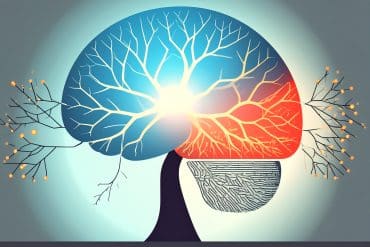Summary: Study reveals the role the neocortex plays in our ability to think, recall events, and make decisions.
Source: UC Irvine
Our ability to think, decide, remember recent events and more, comes from our brain’s neocortex. Now University of California, Irvine neuroscientists have discovered key aspects of the mechanisms behind these functions.
Their findings could ultimately help improve treatments for certain neuropsychiatric disorders and brain injuries.
Their study appears in Neuron.
Scientists have long known that the neocortex integrates what are called feedforward and feedback information streams. Feedforward data is relayed by the brain’s sensory systems from the periphery (our senses) to the neocortex’s higher order areas.
These high-level brain regions then send feedback information to refine and adjust sensory processing. This back-and-forth communication allows the brain to pay attention, retain short-term memories, and make decisions.
“A simple example is when you want to cross a busy road,” said corresponding author Gyorgy Lur, Ph.D., an assistant professor of neurobiology & behavior in the School of Biological Sciences.
“There are trees, people, moving vehicles, traffic signals, signs and more. Your higher-level neocortex tells your sensory system which merit attention for deciding when to go across.”
The interaction between higher- and lower-level systems also allows us to remember what you saw when you glanced both ways to gather the information.
“If you didn’t have that short-term memory, you would just keep looking back and forth and never move,” he said.
“In fact, if our feedforward and feedback streams weren’t constantly working together, we would do very little except respond by reflexes.”
Until now, scientists have not been sure how neurons in the brain participate in these complex processes. Lur and his colleagues discovered that feedforward and feedback signals converge onto single neurons in the parietal regions of the neocortex.

The researchers also found that distinct types of cortical neurons merge the two information streams on markedly different time scales and identified the cellular and circuit architecture underpinning these differences.
“Scientists already knew that integrating multiple senses enhances neuronal responses,” Lur said. “If you only see something or just hear it, your reaction time is slower than when experiencing them with both senses simultaneously. We’ve identified the underlying mechanisms making this possible.”
He noted that the study data suggests the same principles apply if one information stream is sensory and the other is cognitive.
Understanding these processes is critical for developing future treatments for neuropsychiatric ailments like sensory-processing disorders, schizophrenia and ADHD, as well as for strokes and other injuries to the neocortex.
Lur is a fellow of the Center for the Neurobiology of Learning and Memory, the Center for Neural Circuit Mapping and the Center for Hearing Research at UC Irvine.
Ph.D. candidate Daniel Rindner, who performed all neuronal recordings and biological tissue work, served as the paper’s first author. Archana Proddutur, Ph.D., a postdoctoral scholar in the lab and second author on the paper, conducted computational modeling that led to the mechanistic understanding of the processes integrating sensory and cognitive information streams.
About this neuroscience research news
Author: Tom Vasich
Source: UC Irvine
Contact: Tom Vasich – UC Irvine
Image: The image is in the public domain
Original Research: Open access.
“Cell-type-specific integration of feedforward and feedback synaptic inputs in the posterior parietal cortex” by Daniel J. Rindner et al. Neuron
Abstract
Cell-type-specific integration of feedforward and feedback synaptic inputs in the posterior parietal cortex
Highlights
- PPC neurons receive converging monosynaptic input from frontal and sensory cortices
- L5 cell types display distinct temporal dynamics of multimodal synaptic integration
- Cell-type-specific ionic and inhibitory mechanisms shape integration timing
- Subthreshold integration dynamics translate to nonlinear action potential firing
Summary
The integration of feedforward (sensory) and feedback (top-down) neuronal signals is a principal function of the neocortex. Yet, we have limited insight into how these information streams are combined by individual neurons.
Using a two-color optogenetic strategy, we found that layer 5 pyramidal neurons in the posterior parietal cortex receive monosynaptic dual innervation, combining sensory inputs with top-down signals.
Subclasses of layer 5 pyramidal neurons integrated these synapses with distinct temporal dynamics. Specifically, regular spiking cells exhibited supralinear enhancement of delayed—but not coincident—inputs, while intrinsic burst-firing neurons selectively boosted coincident synaptic events.
These subthreshold integration characteristics translated to a nonlinear summation of action potential firing. Complementing electrophysiology with computational modeling, we found that distinct integration profiles arose from a cell-type-specific interaction of ionic mechanisms and feedforward inhibition.
These data provide insight into the cellular properties that guide the nonlinear interaction of distinct long-range afferents in the neocortex.







